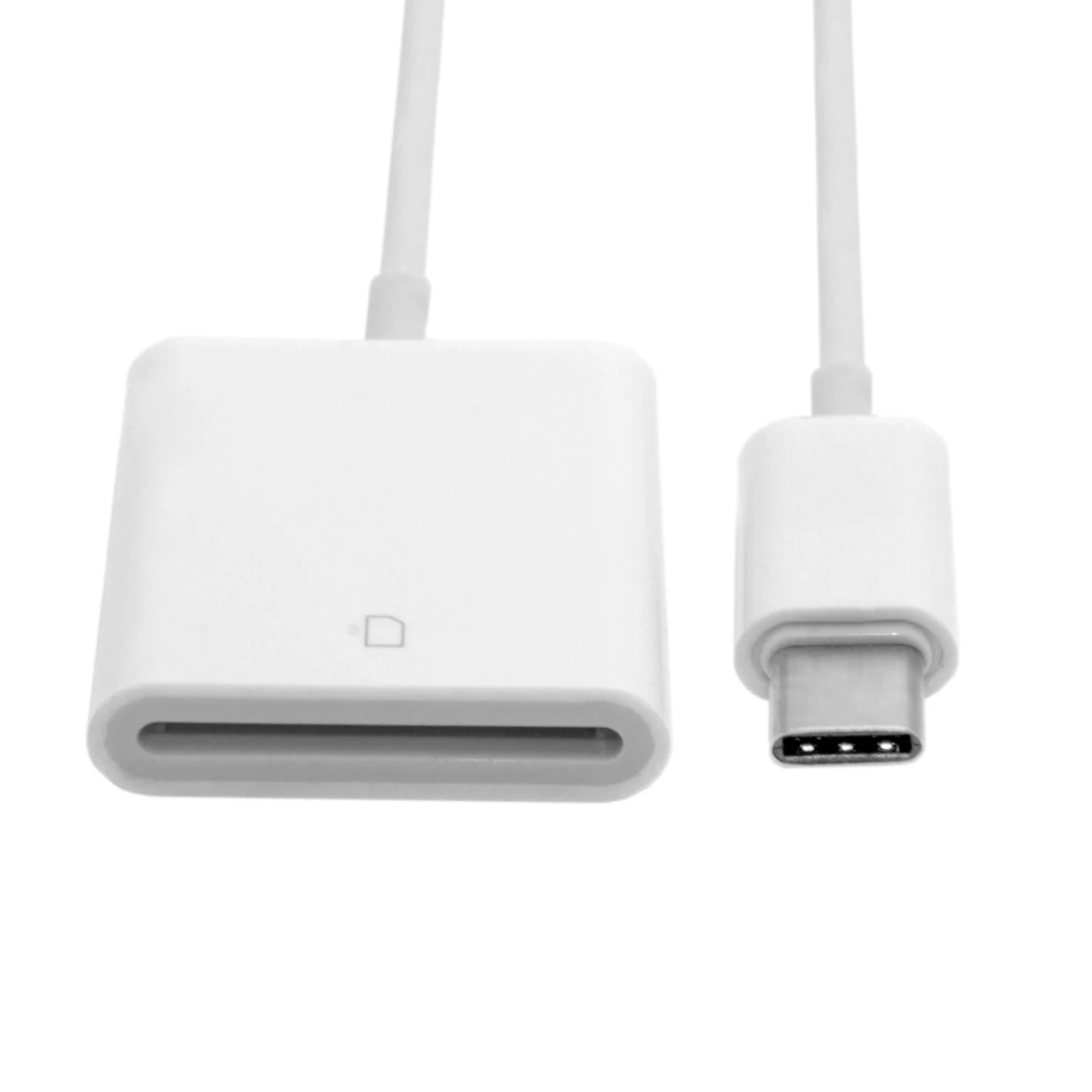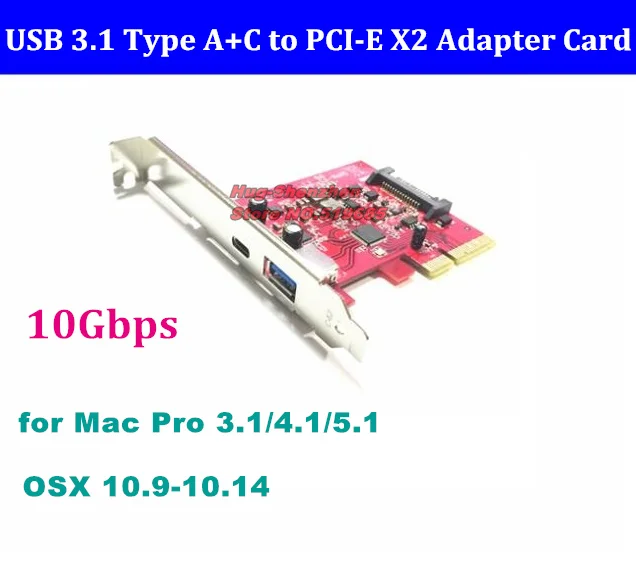
Key Features
Inateck 2 Port PCIe USB 3.0 Card with Internal USB 3.0 20-Pin Connector - Expand Another Two USB 3.0 Ports, Compatible Mac Pro, No Additional Power Connection Needed 4.6 out of 5 stars 846 $19.99 $ 19. Make Offer - Sonnet TEMPO SATA DUO PCIE CARD W/ 2- SATA, 2- USB 3.0 for Mac Pro Cableless 4Port Super Speed USB 3.0 PCIe Card for Apple Mac Pro OSX 10.8-10.15 $21.98.
Four SuperSpeed USB-A 10Gbps Ports—Adds four USB-A 10Gbps ports to your Mac Pro, Windows PC, or Linux computer with PCIe slots; or Thunderbolt to PCIe card expansion system
Powerful Performance with Dual USB 3.2 Gen 2 Controllers—Support data transfers at up to twice as fast as USB 3.0 and USB 3.1 Gen 1, and boost data transfer speeds between connected drives
Powered Ports—Supports USB bus-powered SSD, SSD RAID, and hard drive devices with up to 7.5W power per port

Supports Charge & Sync—Supports USB 3.0 charging port handshake, and will simultaneously sync and charge iPads and other devices that support USB 3.0 charging at 1.5A per device Aimbot for fortnite mac.
Protected Power Delivery—Independent power regulation isolates each port to prevent cross-coupled power glitches that may cause accidental disconnects; resettable device overcurrent fuses protect the card and computer, and may be reset by a simple shutdown
Add USB 3.2 Gen 2 to Thunderbolt Expansion Systems—Add four SuperSpeed USB-A 10Gbps ports to Thunderbolt to PCIe card expansion systems
Easy Installation—Quick and easy user installation into any available PCIe slot
Broad USB Device Support & Compatibility—Supports storage, hubs, and other USB-IF compliant USB devices
It’s 2015. Almost all of us by now know what a USB port is and does. More and more devices nowadays can be charged or powered through these ports. From providing us with easy data storage in thumb drives, to warming our coffee (yes, this is serious people), USB has become a staple in the way technology runs and improves our lives. Like most technology, USB has developed, changed, and greatly improved since its introduction in 1996. Despite our dependence on USB, many of us are still in the dark on what these improvements are and what they mean for the way we use technology. Thankfully, Mac Enthusiasts has put together our best answers to your USB 3.0 questions and beyond!

Usb 3 Pcie Mac
What are the differences between USB 1.1, 2.0, and 3.0? Universal Serial Bus 1.1 was first developed as a universal means to replacing serial and parallel ports. These ports were once very large, and any device to be used through them required expansion cards. The growth of these ports really jumped in the late 90’s when most mice and keyboards came with this as an option to connect. In the year 2000, USB 2.0 was introduced as a much faster option (from 12mbps for USB 1.1. to 480 mbps for 2.0). It gained more traction as an actual universal option in the mid-to-late 2000’s. In 2008, USB 3.0 was introduced. Amongst other helpful updates from 2.0, USB 3.0 is ten times faster, working at speeds as fast as 5 Gigabytes.
What else does USB 3.0 offer? Unlike USB 2.0, USB 3.0 offers quick duplex data transfer. This means that over USB 3.0, information can be read and written at the same high speed simultaneously. Because USB 3.0 offers 80% more power than USB 2.0, you can power even more devices (up to 4) from a single port! That’s something to think about if you’re using it to charge your phone and warm your coffee. Last but not least, USB 3.0 has suspended device polling. USB 2.0 used to rely on active data transfers, usually draining power from any idle device. Now, with 3.0, you have better power management for inactive, connected devices.
Do I have USB 3.0 on my Mac computer? If you have a 2012 Mac or newer you are already working with USB 3.0 ports. If you want to learn more about it, or if you have an older Mac and see which ports apply, you can find out through “About This Mac” in the Apple menu. From there, select “System Report” or “System Profiler.” Click on “USB” on the left-hand side to reveal which ports are USB 3.0. From here,you can also see the speed capabilities of any device you have plugged in.
What does it mean if my port says Hi-Speed Bus, instead of SuperSpeed? If you have a device already plugged into your USB port while you’re looking at the specs on your USB ports, you may see that one is showing that it is a “USB 3.0 Hi-Speed Bus” while the other, unused port, shows it’s is a “USB 3.0 SuperSpeed Bus.” This means that you are running a USB 2.0 out of the other port. How to unlock rotation on iphone 7. Both ports are the same, with the same capabilities, but if you run USB 2.0 out of a USB 3.0 port, you will only have the ability to use the Hi-Speed option.

I don’t have USB 3.0. How can I get it? If you’ve checked your Mac’s capabilities and realize you do not have a USB 3.0 port, but you’d like to have the capability, there are external USB 3.0 hubs available. You must be sure you are getting a device that actually upgrades USB 2.0 to 3.0 and doesn’t just create more ports. Some suggest, Thunderbolt 2 Express HD dock. You can also always consider upgrading your Mac laptop. Mac Enthusiasts sells refurbished Mac laptops with more dependability and better support. Check out our webstore for some of our offerings. Want to sell your Mac back to us? We can do that too. Fill out this form for a quote.

Usb 3 Card For Mac Pro
If you have any more questions about USB 3.0 capabilities, offerings, or any questions in general, we love to be available to help! Feel free to come in, call us at (800)448-1892, or contact us online here.